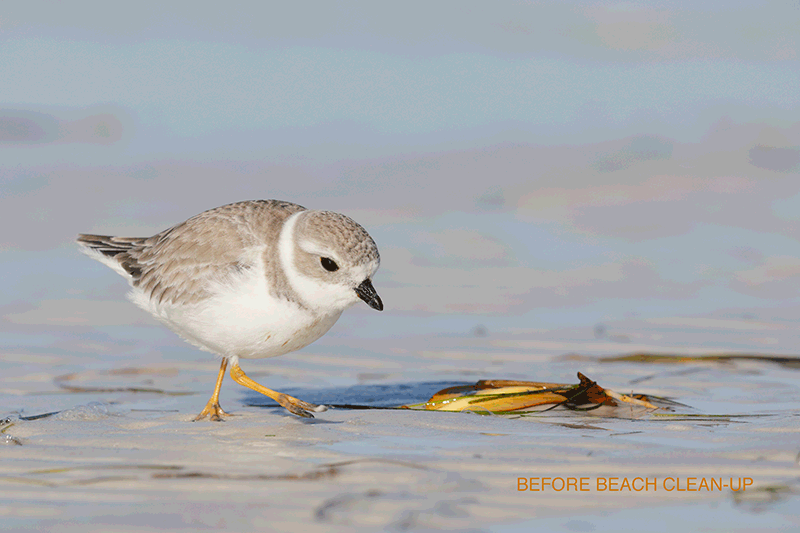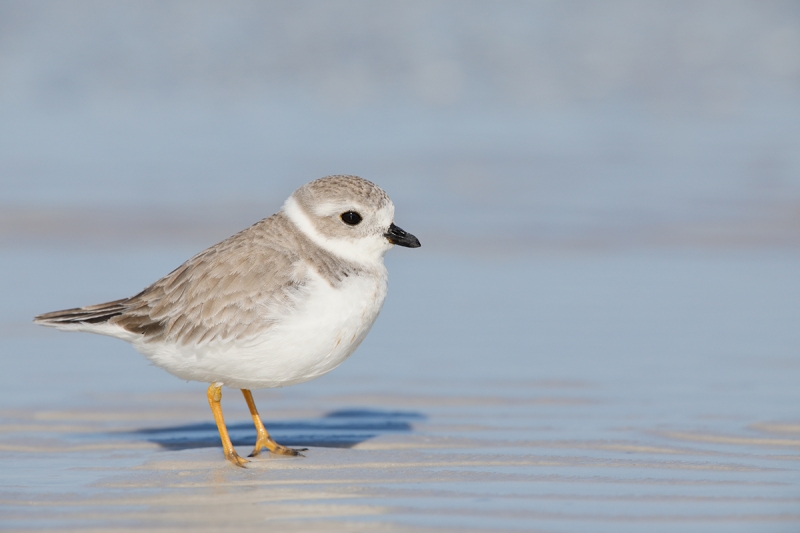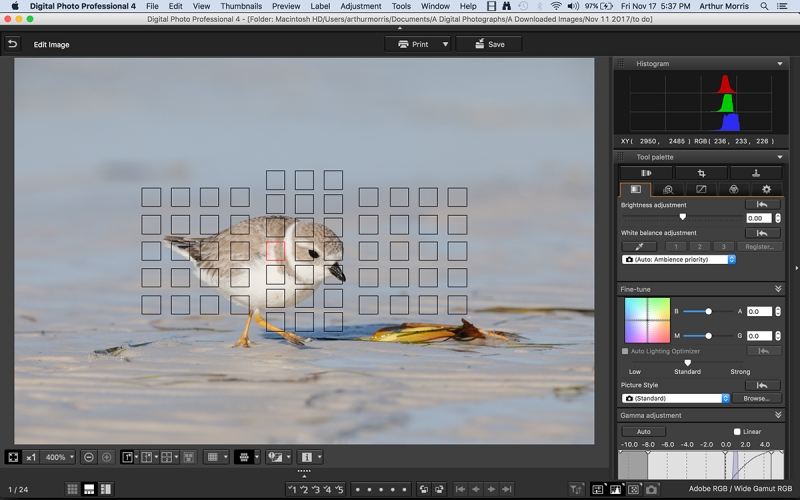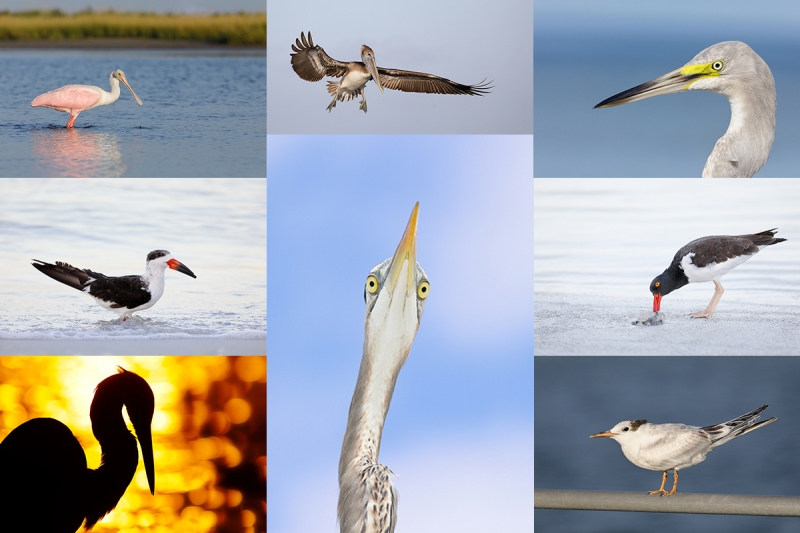Stuff
Midday on Friday I visited my 62-year old sister Arna in a nursing/rehab home. She is not doing well at all. It is a long story. That afternoon Anita North and I were off to Heckscher State Park where as many as five young Hudsonian Godwits had been hanging out for a month. Last week there were three left, and one of those was seen on Thursday. We had our hopes up and thanks to the kindness of BPN’s Isaac Grant we learned late in the day that the bird had changed parking fields. Alas, we did not find the bird.
On Friday evening there was a big family dinner meeting to discuss Arna’s care, treatment, and finances. Nothing was decided but by the time we all said good night everyone felt very close and loving.
I was thrilled to learn that Gary Wade sold his 400mm f/2.8 L IS Canon lens right after I suggested that a $500 price drop might do the trick. There are still lots of great camera body deals on the Used Gear Page here Do consider joining me on the Early Winter DeSoto IPT. Details below.
The Streak
Today makes one hundred thirteen days in a row with a new educational blog post! This one took less than an hour to prepare. With all of my upcoming free time (or not …), the plan right now is to break the current record streak of 480 … Good health and good internet connections willing.
Everybody’s Doing It…
Everybody’s buying and selling used gear on the BAA Used Gear Page. Sales of lenses especially have been picking up recently. There are lots of great deals on a variety of camera bodies right now, all with low prices. Selling your used (or like-new) photo gear through the BAA Blog or via a BAA Online Bulletin is a great idea. We charge only a 5% commission. One of the more popular used gear for sale sites charged a minimum of 20%. Plus assorted fees! Yikes. They recently folded. And eBay fees are now in the 13% range. The minimum item price here is $500 (or less for a $25 fee). If you are interested please e-mail with the words Items for Sale Info Request cut and pasted into the Subject line :). Stuff that is priced fairly–I offer free pricing advice, usually sells in no time flat. In the past few months, we have sold just about everything in sight. Do know that prices on some items like the EOS-1D Mark IV, the old Canon 500mm, the EOS-7D, and the original 400mm IS DO lens have been dropping steadily. Even the prices on the new 600 II and the 200-400 with Internal Extender have been plummeting. You can see all current listings by clicking here or by clicking on the Used Photo Gear tab on the yellow-orange menu bar at the top of each blog post.
Booking.Com
Booking.Com came through for me twice again recently with both the DeSoto Fall IPT and next July’s UK Puffins, Gannets, and Bempton Pre-trip room reservations. And all the rates were great. If you’d like to give Booking.Com a shot, click here and you will earn a $25 reward. Thanks to the many who have already tried and used this great service.


Gear Questions and Advice
Too many folks attending BAA IPTs and dozens of folks whom I see in the field, and on BPN, are–out of ignorance–using the wrong gear especially when it comes to tripods and more especially, tripod heads… Please know that I am always glad to answer your gear questions via e-mail.
|
|
|
This image was created at Fort DeSoto on the morning of November 11, 2017 with the Induro GIT304L Grand Series 3 Stealth Carbon Fiber Tripod/Mongoose M3.6-mounted Canon EF 600mm f/4L IS II USM lens, the Canon Extender EF 2X III, and my favorite endangered species camera body, the Canon EOS 5D Mark IV. ISO 800. Evaluative metering +2/3 stop as framed: 1/1250 sec. at f/11 in Manual mode. AWB in mostly sunny, very slightly overcast conditions. LensAlign/FocusTune micro-adjustment: -10. One AF point to the left of the center AF point/AI Servo/Shutter Button AF was active at the moment of exposure. The selected AF point was on the front part of the faint neck-band pretty much on the same plane as the bird’s eye. Image #1: Piping Plover, worn juvenile on clean sand beachBe sure to enjoy an enlarged version by clicking on the image. |
The Times They May Be a Changing …
For the past few decades, images like the one above were the apples of my eye: large in the frame subjects, low perspectives, clean and distant backgrounds, sharp focus, and shallow depth of field. Very recently I have begun leaning to smaller in the frame subjects and have come to realize that including some grasses, twigs, pebbles, leaves, or other accoutrements is not the end of the world. See below for a recent example.
Note: Both of today’s images were created while I was sitting behind my lowered tripod.
Image Sharpness
If you are impressed by the sharpness of today’s images, both made at 1200mm, note the AFA value of -10 for my 600 II/2X III TC i, and my main 5D Mark IV body. With a carefully done micro-adjustment for this rig and this rig only, the AFA of -10 will make quite a substantial difference in the sharpness of the images. You often wind up with AFA values close to zero like -1 or +2; in those cases you would have been fine had you not done the micro-adjusting. There is of course, no way of knowing in advance. So I do the work and wind up being confident that I will be making consistently sharp images with a given gear combination.
Learn more about making accurate LensAlign/FocusTune micro-adjustments in the log post here.
|
|
|
This image was created at Fort DeSoto on the morning of November 11, 2017 with the Induro GIT304L Grand Series 3 Stealth Carbon Fiber Tripod/Mongoose M3.6-mounted Canon EF 600mm f/4L IS II USM lens, the Canon Extender EF 2X III, and my favorite endangered species off camera body, the Canon EOS 5D Mark IV. ISO 800. Evaluative metering +2/3 stop as framed: 1/1250 sec. at f/11 in Manual mode. AWB in mostly sunny, very slightly overcast conditions. LensAlign/FocusTune micro-adjustment: -10. One AF point to the left of the center AF point/AI Servo/Shutter Button AF was active at the moment of exposure. The selected AF point was on middle of the neck band as originally framed, directly behind and on the same place as the bird’s eye. Image #2: Piping Plover, worn juvenile with turtle grass & ???Be sure to enjoy an enlarged version by clicking on the image. |
The Wider View
Here the bird had moved well left of sun angle but was headed back toward me so I was sitting farther from it than I had been. The bird was foraging along at a good pace in typical plover fashion, step, step, step, stop. I attempted to track him as he was stepping and with this image I succeeded in making a sharp one that included some colorful grasses in the frame. The optimized image above was cropped from three sides: below, left, and above while maintaining the original 3X2 proportion.
The Stronger Image?
Which of today’s two featured images do you feel is the strongest? Why?
|
|
A DPP 4 Screen Capture for Image #2 |
A DPP 4 Screen Capture for Image #2
I included the DPP 4 screen capture in today’s blog post for two main reasons:
- 1- So that you could see the extent of my crop and how I saw the picture within the picture.
- 2- To show you the placement of the AF point. In an ideal world I would have moved the AF point to the left so as to move the bird back in the frame a bit.

|
The Image Optimization
After converting the image in DPP 4 and bringing the TIF file into Photoshop I attempted to eliminate the distracting stuff while leaving most of the grasses to convey an accurate sense of place. The moment that I saw the sharp RAW file on my laptop I immediately saw the picture within the picture, the crop from three sides that would leave me with a very nice image.
As is usually the case, I used the Spot Healing Brush, the Patch Tool, a bit of Content Aware Fill, and several small Quick Masks refined by layer masks to do the clean-up work.
|
|
|
The BIRDS AS ART Current Workflow e-Guide (Digital Basics II) will teach you an efficient Mac or PC/Photo Mechanic/Photoshop workflow that will make it easy for you to make your images better in Photoshop (rather than worse). That true whether you convert your images in DPP 4 or ACR. See the blog post here to learn lots more and to read a free excerpt. You can order your copy from the BAA Online Store here, by sending a Paypal for $40 here, or by calling Jim or Jennifer weekdays at 863-692-0906 with your credit card in hand. |
The BIRDS AS ART Current Workflow e-Guide (Digital Basics II)
The few things mentioned above (and tons more) are covered in detail in the BIRDS AS ART Current Workflow e-Guide (Digital Basics II), an instructional PDF that is sent via e-mail. Learn more and check out the free excerpt in the blog post here. The new e-Guide reflects my Macbook Pro/Photo Mechanic/DPP 4/Photoshop workflow. Do note that you will find the RGB Curves Adjustment Color Balancing tutorial only in the new e-guide. Note: folks working on a PC and/or those who do not want to miss anything Photoshop may wish to purchase the original Digital Basics along with DB II while saving $15 by clicking here to buy the DB Bundle.
The two most recent and many of the older MP4 Photoshop Tutorial videos releases go hand and hand with the information in DB II):
Folks who learn well by following along rather than by reading can check out the complete collection of MP 4 Photoshop Tutorial Videos by clicking here.
You can learn how and why I and other discerning Canon shooters convert nearly all of their Canon digital RAW files in DPP 4 using Canon Digital Photo Professional in the DPP 4 RAW conversion Guide here. And you can learn advanced Quick Masking and advanced Layer Masking techniques in APTATS I & II. You can save $15 by purchasing the pair. Folks can learn sophisticated sharpening and (NeatImage) Noise Reduction techniques in the The Professional Post Processing Guide by Arash Hazeghi and yours truly.
|
|
Recent Fort DeSoto ImagesFrom bottom left clockwise back to center: Great Egret, blasting sunrise highlights; Black Skimmer, winter plumage in pre-dawn light; Roseate Spoonbill foraging; Brown Pelican, juvenile landing; hybrid heron X egret???; American Oystercatcher feeding; Royal Tern, worn juvenile; Great Blue Heron from below. You can see a composite of more recent images in the DeSoto Sucked This Past Weekend blog post here. |
Fort DeSoto Early Winter IPT. 3 1/2 days: $1599
Saturday DEC 2 (afternoon session) through the full day on Tuesday DEC 5, 2017. Meet and Greet Introduction on SAT DEC 2, 2017
With no water in Estero Lagoon, Corkscrew Swamp and Anhinga Trail total busts for many years, and Ding Darling NWR managed into oblivion, Fort DeSoto has emerged as the premier bird photography location in the state. Join me in early winter to escape the cold weather and photograph lots of tame terns, gulls, herons, egrets (including Reddish Egret), shorebirds (including and especially Marbled Godwit), Osprey, and Brown Pelican. Long-billed Curlew, Wood Stork, and Roseate Spoonbill all range somewhere between likely and possible.
Learn to get the right exposure every time, to approach free and wild (and often tame!) birds, and to design a pleasing image. And learn the location of my new Fort DeSoto hotspot along with my favorite sunset location (sky conditions permitting). To register call Jim or Jen at the office at 863-692-0906 or shoot me an e-mail.
DeSoto IPT Details
This IPT will include four 3 hour afternoon sessions, three 3 1/2 hour morning sessions, three lunches, and after-lunch image review and Photoshop sessions. To ensure early starts, breakfasts will be your responsibility. Dinners are on your own so that we can get some sleep.
Because of the narrow time frame, your $499 non-refundable deposit can be paid not by credit card. Call Jim or Jennifer at the office with a credit card at 863-692-0906 to register. Your balance must be paid by check once you sign up. The balance check (made out to “BIRDS AS ART) should me mailed to us at BIRDS AS ART, PO Box 7245, Indian Lake Estates, FL, 33855. Please print, complete, and sign the form that is linked to here and shoot it to us along with your balance check. If you have any questions, please feel free to contact me via e-mail.
Canon lens rentals are available on a limited basis: 600 II, 500 II, 400 DO II, and 200-400 f/4 with Internal TC.
If In Doubt …
If in doubt about using the BAA B&H affiliate link correctly, you can always start your search by clicking here. Please note that the tracking is invisible. Web orders only. Please, however, remember to shoot me your receipt via e-mail.




Please Remember to use my Affiliate Links and to Visit the New BAA Online Store 🙂
To show your appreciation for my continuing efforts here, we ask, as always, that you get in the habit of using my B&H affiliate links on the right side of the blog for all of your photo and electronics purchases. Please check the availability of all photographic accessories in the New BIRDS AS ART Online Store, especially the Mongoose M3.6 tripod head, Wimberley lens plates, Delkin flash cards and accessories, and LensCoat stuff.
As always, we sell only what I have used, have tested, and can depend on. We will not sell you junk. We know what you need to make creating great images easy and fun. And please remember that I am always glad to answer your gear questions via e-mail.
I would of course appreciate your using our B&H affiliate links for all of your major gear, video, and electronic purchases. For the photographic stuff mentioned in the paragraph above, and for everything else in the new store, we, meaning BAA, would of course greatly appreciate your business. Here is a huge thank you to the many who have been using our links on a regular basis and those who will be visiting the New BIRDS AS ART Online Store as well.
Amazon.com
Those who prefer to support BAA by shopping with Amazon may use the logo link above.
Amazon Canada
Many kind folks from north of the border, eh, have e-mailed stating that they would love to help us out by using one of our affiliate links but that living in Canada and doing so presents numerous problems. Now, they can help us out by using our Amazon Canada affiliate link by starting their searches by clicking here.
Be sure to like and follow BAA on Facebook by clicking on the logo link upper right. Tanks a stack.
Typos
In all blog posts and Bulletins, feel free to e-mail or to leave a comment regarding any typos or errors. Just be right :).



















Hi, Artie. I love both images. My view is that learning to isolate my subject against a clean background makes me a better photographer. Much of the time, the images are better this way, but often enough, as you say, including other things for context is very helpful and aesthetically pleasing as well. But if you don’t know how to create the clean background, then it seems you’re less likely to pay attention to what’s there and include other elements thoughtfully and judicially. Failure to pay attention to the background has ruined many an image.
Well said, and I love ’em both as well.
with love, artie
I really like #2 ! The bird has a purpose and is going about its business. Between a fine behavior photo and a fine pose photo, I usually prefer the behavior. I like the cropping of #2 and that grass stalk on the left. I think I’d like the stalk even better if the water bubbles were still against it. Were the dark marks in the bird’s breast feathers normal color or dirt?
Probably a bit of regurgitant. I cleaned most of it on Image #1.
with love, artie
I agree with most everyone else. I like Image #2 best. However, I think there is certainly a place for both.
First image great but for me second is the winner. Showing the bird foraging through its habitate is telling me the story of, in part, what that bird does for a living. The first image doesn’t do that as well. I agree, two aspects of wildlife photography. Showing the beauty of the animal and showing both that and how that animal interacts with its environment. Both have their merits.
I like the second one for sure. The position of the legs and angle ofthe body gve it character. I might go one step further and not remove anything from the background. I love the gradual fade from sharp focus to blur producedby the lens converter combination.
Great shot
Just realized I wrote Semipalmated Sandpiper instead of Semipalmated Plover. Sorry for this oversight.
Thanks for raising this because it has been on my mind for some time.
Initially, I included context because I had no choice. I did not have the gear or skill to isolate my subjects. Now, I believe my images are more interesting when contextual elements are included. They are part of the story.
I also believe that one of my obligations as a wildlife photographer is to help my audience understand the link between habitat loss and the decline of many species. The contextual elements in my images help to tell this story.
There are other reasons. In the case of a Semipalmated Sandpiper, context helps the audience understand scale. When photographing a Great Blue Heron this week, I included images of the bird attempting to walk on ice. The lighting wasn’t the best and the bird was too far away for great images, but the story was interesting.
When I show an image of a White-rumped Sandpiper and explain how this small bird is an extreme migrant that travels from the Arctic islands to the southern tip of South America, they are fascinated. Contextual elements help to tell the story. The audience begins to understand the importance of providing these birds with safe foraging areas during their migration.
My audience is small, but these messages are important.
Thanks and agree. But I still love my clean, tight and graphic stuff that best shows the beauty of the bird. I am just being open to expanding my horizons 🙂
BTW, I am pretty sure that white-rumpeds have been seen in Antarctica.
with love, artie
ps: true for either the plover or the sandpiper 🙂
Hi Artie, I think image #2 is the stronger image, I agree that the grass adds extra interest to the image. I really like the image but I would remove the strand of grass (I think it’s grass) protruding out from the left edge of the frame (level with the birds feet). It draws my eyes away from the bird and the colourful grasses. Unlucky about the Hudsonian Godwits. I hope you all manage to find peace with Arna’s wellbeing.
Jake
Thanks Jake. I intentionally left the strand of grass to better balance the image, especially to balance the long strand of grass that comes in from the right frame edge. In addition, it adds another angled element to go along with the bird’s raised leg. There is of course no “right” answer; but I like it and it’s my image 🙂
with love, artie
ps: I am completely at peace with Arna’s situation.